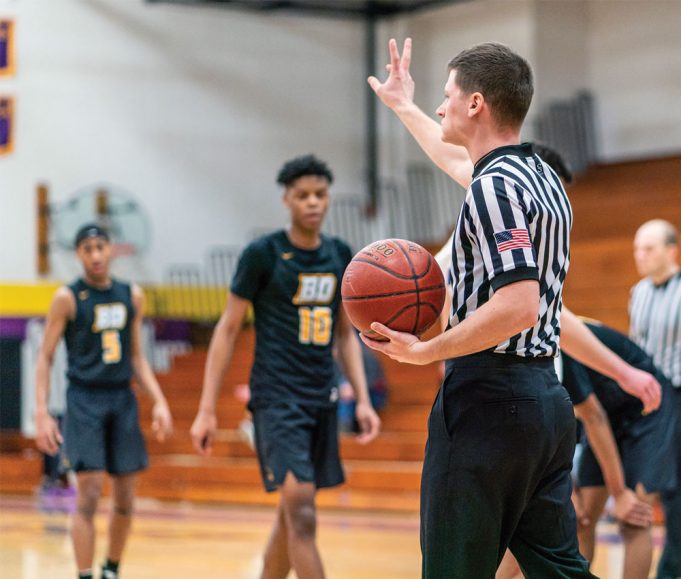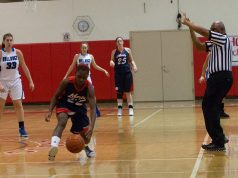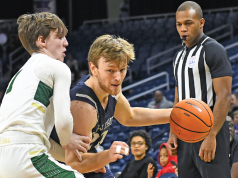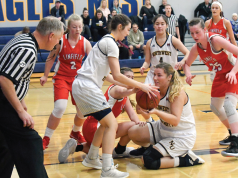W
hen thinking about the mechanics you use as a basketball official, where do you put the bulk of your study and practice? Proper location and rotation as the lead in a three-person crew? Whether or not to long switch on fouls in the frontcourt? Knowing who is responsible for the clock at the end of a period, quarter or half?
These are all important mechanics questions that should be studied individually away from the floor and discussed collectively as crews during a pregame, as proper adherence is going to allow all members of the crew to perform to the best of their abilities.
One area I have noticed does not get a lot of discussion during pregames is free-throw mechanics. Too often, it seems crews take for granted how to handle this particular aspect of the game.
A good basketball coach would not choose to teach his or her team how to run an offense, how to play defense and then ignore the sport’s equivalent of special teams. As officials, we should not, either. Especially when working with officials with whom we are unfamiliar, we should devote at least a portion of our pregame discussion to our duties during free-throw situations.
Positioning.
The first element of good free-throw mechanics is knowing where to position ourselves on the floor during free-throw attempts. Simple enough, until you are one of those officials who toggles between two-person and three-person assignments and risk finding yourself in the wrong spot on the floor.
In NFHS two-person mechanics, the official who rules the foul that results in free throw(s) remains tableside as the trail official and is located near the 28-foot line, while the non-ruling official administers the free throw(s) from the endline and takes a position just outside the lane line opposite the table. This allows for one official on each side of the floor to observe possible violations by both teams, cover the rebounding action and put the crew in position for the next play once the final free throw ends. If two-person mechanics are being utilized in an NCAAW game, the ruling official goes opposite the table and the lead official administers from just outside the tableside lane line.
In three-person mechanics, positioning is the same for both NFHS and NCAAW. The ruling official remains tableside as the trail official and is located near the 28-foot line. The lead official administers the free throw(s) from the endline and takes a position just outside the tableside lane line. The center official takes a position free-throw line extended opposite the table. In NCAAM, the ruling official goes opposite the table to become the center official, while the non-ruling officials become the lead and trail. In all three rule codes, this allows for officials on both sides of the floor to observe possible violations by both teams, cover the rebounding action and put the crew in position for the next play once the final free throw ends.
Communication.
Good free-throw communication actually begins before we ever send a player to the charity stripe. As a crew, we need to be aware of the foul situation for both teams and know when they have qualified for the bonus. In NFHS and NCAAM, the bonus goes into effect on the seventh team foul of each half (except player-control and team-control fouls), with the double bonus in effect starting with the 10th team foul. In NCAAW, the two-shot bonus goes into effect on the fifth team foul (except offensive fouls) of each period.
All officials on a crew should be cognizant of the team foul count and when a team is one foul away from putting its opponent into the bonus. At that point, the crew should communicate with one another the next foul will put the offended team in the bonus. This can be done with a subtle hand signal and should also include some form of brief verbal communication: “Hey, John, next foul on this end puts us in the bonus.” Such communication will help avoid the laundry list of correctable errors listed in the NFHS (2-10) and NCAA (2-12) rulebooks that deal with incorrectly awarded free throws, help with game flow and make the crew look sharp to players, coaches and observers.
Once a crew has determined free throws will be attempted, the next step in effective communication kicks in. Before each free throw is administered, the lead official must physically and verbally indicate how many free throws remain. This is not just intended for the players’ benefit but for all members of the officiating crew, and the perimeter official(s) need to physically mirror the lead official by holding up one, two or three fingers, or one finger on each hand (the first attempt in a bonus situation). Again, this is designed to avoid a correctable error situation. If the lead is showing one thing and a perimeter official another, that’s a flashing red stop sign that the crew needs to come together and confirm how many free-throw attempts remain before proceeding with administration.
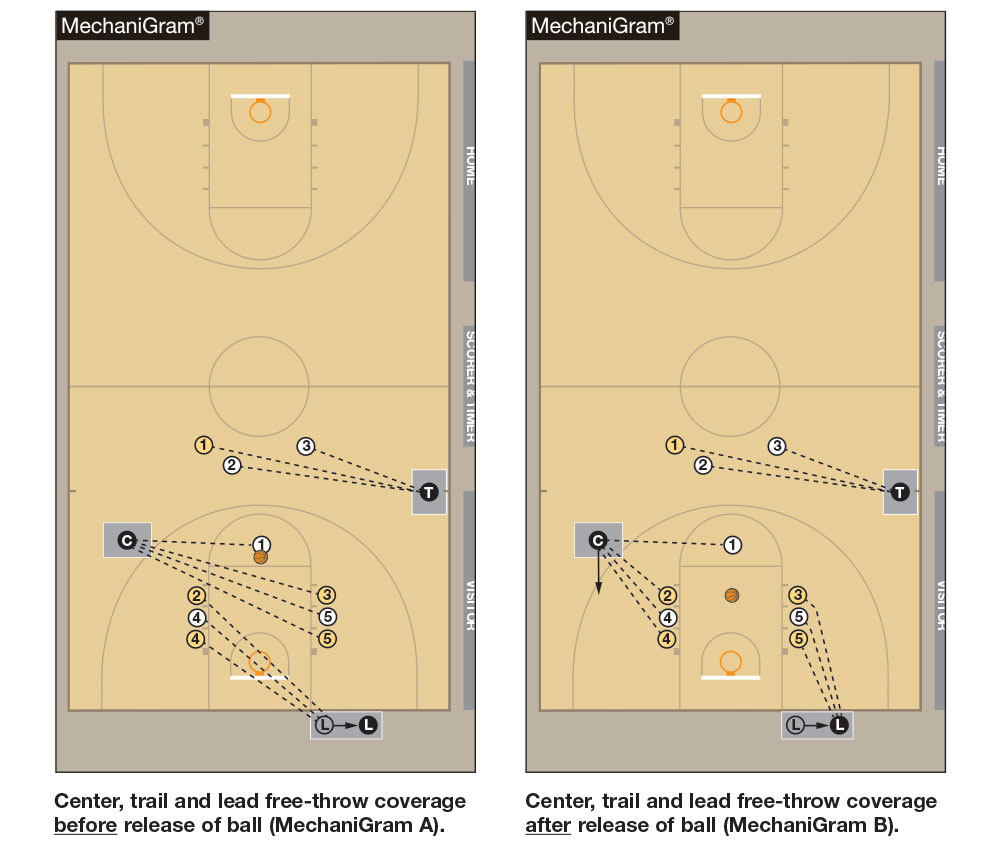 Responsibilities.
Responsibilities.
Once all members of the crew have confirmed how many free throws are remaining to be attempted and have obtained their proper spots on the playing court, they must be aware of their areas of responsibility during free-throw action.
The first order of business is possible violations. In both two-person and three-person crews, the lead official should be looking across the lane and taking responsibility for the players lined up along the opposite lane line. In two-person mechanics, the trail official is responsible for all players lined up along the opposite lane line, any violations committed by the shooter (including a possible 10-second violation) and any violations committed against the shooter (in NFHS, an opponent breaking the plane of the free-throw line before the attempt has touched the basket). In three-person mechanics, the center official is responsible for all of those scenarios, while the trail official is responsible for the remaining players who are not in a lane space and may violate by breaking the plane of the three-point line before the ball touches the basket (MechaniGram A).
The next responsibility is adjudicating the rebounding action that occurs once the shooter has released the free-throw attempt. At this point, all officials should visually release the players on their opposite lane line and monitor activity in their primary coverage area, just as they would on any other try attempt (MechaniGram B).
Knowing these two responsibilities is crucial to avoid having multiple officials watching the same players and leaving other players with no eyes upon their activity.
The final responsibility involves re-starting the clock. In two-person mechanics, the trail official chops to start the clock on all missed free throws, doing so when the ball is touched by a player. In three-person mechanics, the center official has this responsibility.
If the last free throw is successful, the perimeter official releases the clock to the old lead/new trail official, who will chop to start the clock when the ball is legally touched following the ensuing throw-in. This official also must remember this is a non-designated spot throw-in, leaving the team making the throw-in with several options that are not available on a designated-spot throw-in.
What's Your Call? Leave a Comment:
Note: This article is archival in nature. Rules, interpretations, mechanics, philosophies and other information may or may not be correct for the current year.
This article is the copyright of ©Referee Enterprises, Inc., and may not be republished in whole or in part online, in print or in any capacity without expressed written permission from Referee. The article is made available for educational use by individuals.

